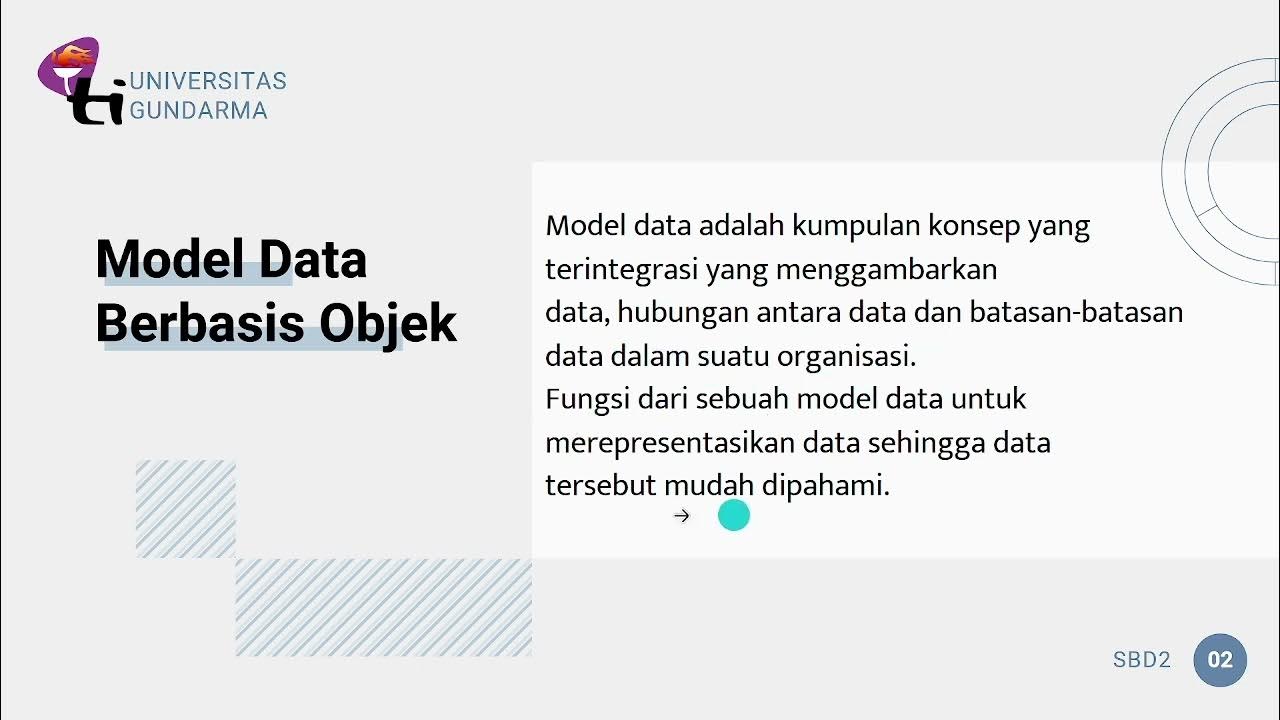Aula 01 de Modelagem Relacional (Banco de Dados)
Summary
TLDRIn the first lesson of a data modeling course, Helio introduces the fundamentals of databases and database management systems. He emphasizes the importance of data modeling in defining storage structures and facilitating user interactions without programming knowledge. The session covers the evolution of database systems and various models, focusing on the relational model developed by Edgar F. Codd. Helio outlines the three phases of data modeling—conceptual, logical, and physical—and stresses the significance of accurate data modeling before programming to avoid costly errors. The lecture concludes with a reminder of the crucial role that data modeling plays in software development.
Takeaways
- 📚 This is the first lesson in a data modeling course, aimed at contextualizing and situating the course content.
- 💾 Data modeling defines the structure of data storage, which is crucial for processing and forming a functional system.
- 👩💻 Systems require user interfaces that allow non-programmers to operate them effectively, such as those found in apps like Facebook and Instagram.
- 🛠️ Every system needs to store data, whether it's for sales, rentals, or even gaming, necessitating a robust data storage capability.
- 📝 Historically, programmers managed all aspects of software development, which was repetitive and challenging, leading to the need for Database Management Systems (DBMS).
- 🔍 A DBMS separates the database (data storage) from the software that manages it, addressing issues like data integrity and security.
- ⚙️ Various DBMS solutions exist, each with unique characteristics, including relational, object-oriented, and document-based models.
- 🌐 The relational model, developed by Edgar F. Codd, is the most widely used and will be the focus of this course.
- 🔑 Understanding the differences in business operations is essential for defining specific data structures, as each business may have unique needs.
- 📊 Data modeling consists of three phases: conceptual (understanding the business), logical (refining the model), and physical (defining the structure), which will be covered in future lessons.
Q & A
What is the main objective of the first class in the data modeling course?
-The main objective is to contextualize and situate the course, providing an introduction to databases, database management systems, their origins, and functions.
Why is data modeling important?
-Data modeling is crucial because it defines the structure of data storage and processing, forming a system that allows users to interact with data without needing programming knowledge.
What are some examples of complex systems mentioned in the transcript?
-Examples of complex systems include Facebook, WhatsApp, and Instagram, which allow users to operate without programming skills.
How does a commercial system typically process data when registering a product?
-When registering a product, a user inputs data into fields and clicks a button, which triggers processing that may involve calculations, validations, or data checks.
What role does a database management system (DBMS) play in data storage?
-A DBMS manages the database, addressing issues like integrity constraints, concurrency control, failure recovery, access methods, and security.
What are the three phases of data modeling mentioned in the script?
-The three phases are: 1) Conceptual phase, where the business understanding is established; 2) Logical phase, where the conceptual model is refined; 3) Physical phase, where the data structure is defined.
Why is understanding business functionality crucial for data modeling?
-Understanding business functionality is essential because it provides the information necessary for effective data modeling, ensuring that the data structure aligns with business needs.
What potential issues can arise from poor data modeling?
-Poor data modeling can lead to costly errors in defining data structure and programming, which may result in inefficient systems or the need for extensive revisions.
What is the significance of the software that accompanies the database?
-The accompanying software is significant because it provides a user interface for non-programmers to interact with the database, ensuring data access and management are user-friendly.
What common misconception do students have about learning data modeling and programming?
-Many students, including the speaker, often focus more on learning programming commands and interface design rather than understanding the importance of data modeling, which is foundational to successful programming.
Outlines

Cette section est réservée aux utilisateurs payants. Améliorez votre compte pour accéder à cette section.
Améliorer maintenantMindmap

Cette section est réservée aux utilisateurs payants. Améliorez votre compte pour accéder à cette section.
Améliorer maintenantKeywords

Cette section est réservée aux utilisateurs payants. Améliorez votre compte pour accéder à cette section.
Améliorer maintenantHighlights

Cette section est réservée aux utilisateurs payants. Améliorez votre compte pour accéder à cette section.
Améliorer maintenantTranscripts

Cette section est réservée aux utilisateurs payants. Améliorez votre compte pour accéder à cette section.
Améliorer maintenantVoir Plus de Vidéos Connexes

Bancos de Dados - Aula 01 - Visão geral sobre banco de dados e motivação

Chapter 1 - Overview of Databases

SBD1 Pertemuan1 | 3IA03 & 3IA04

Fundamentals of Database Systems

ADBMS: Unit 1: Lecture 1: Database Concepts, Introduction to Transaction Control Language.

1- What is Data, Database, DBMS and Types of Database | Fundamentals of Database
5.0 / 5 (0 votes)
